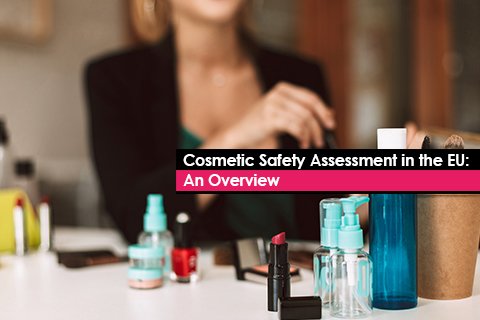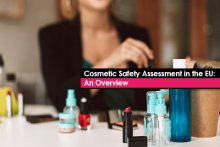The beauty and personal care industry is constantly evolving, driven by the pursuit of newer innovations and trends. With an array of cosmetic products flooding the market, it is crucial to prioritize consumer safety. In the European Union (EU), cosmetic safety assessment plays a pivotal role in ensuring that all products entering the market meet stringent safety standards before reaching consumers.
In this blog, we shall explore the significance of cosmetic safety assessment, the role of EU regulations in the assessment, the role of the appointed Responsible Person (RP), and the meticulous evaluation of ingredients to guarantee the safety of cosmetics.
Protecting Consumer Safety
The primary goal of cosmetic safety assessment in the EU is to protect the health and well-being of consumers. Cosmetics, including skincare, haircare, makeup, and personal hygiene products, come into direct contact with the skin and mucous membranes. Thus, non-compliant ingredients or formulations can lead to adverse reactions, allergies, and even serious health hazards. By implementing rigorous safety assessments, the EU aims at minimizing potential risks and thereby instilling trust in consumers.
Compliance with EU Regulations
Cosmetic safety assessment in the EU is governed by strict regulations that help maintain a high level of consumer protection. The EU Cosmetics Regulation (Regulation [EC] No. 1223/2009) puts forward comprehensive guidelines for the safety evaluation of cosmetic products. It outlines specific requirements for labeling, banned substances, and adverse event reporting. Cosmetic manufacturers and suppliers must comply with these requirements to market their products in the EU.
The Role of Responsible Person (RP):
According to the EU Cosmetics Regulation, each cosmetic product must have a designated RP, who is based within the EU territory. The RP is responsible for ensuring that the product undergoes a thorough safety assessment and complies with all the relevant regulations. They act as a liaison between the brand owner and the Regulatory authorities, playing a key role in maintaining transparency and accountability.
Assessing Ingredient Safety
Cosmetic safety assessment focuses on evaluating the safety of individual ingredients and their interactions within the product formulation. Toxicological data, clinical studies, and the history of an ingredient’s usage are analyzed to determine potential risks. If an ingredient is found to be harmful or lacks sufficient safety data, its usage may be restricted or banned within the EU.
Cosmetic safety assessment in the EU is a critical component of consumer protection, legal compliance, and industry responsibility. By subjecting cosmetic products to rigorous safety evaluations, the EU ensures that only safe and reliable products enter the market. As consumers become more conscious of the quality of the products that they use on themselves, adherence to such safety standards not only helps build their trust in brands, but also promotes a healthier and safer beauty and personal care industry in the EU.
To avoid legal repercussions in the EU market, it is crucial to stay compliant with the established regulations. Consult a Regulatory expert like Freyr to get assistance with cosmetic safety assessment in the EU.





